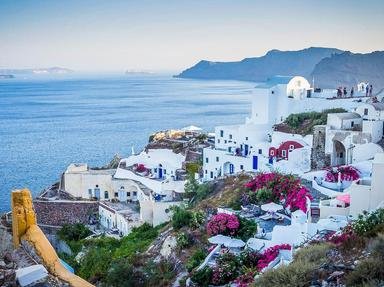Quiz Answer Key and Fun Facts
1. Scandinavia's largest city, a trailblazer of environmental protection and sustainability, was the winner of the very first European Green Capital award. Which beautiful capital - quite familiar with prestigious prizes - am I talking about?
2. By setting itself the ambitious goal of almost eliminating CO2 emissions by 2050, Hamburg - one of Europe's busiest ports - won the title in 2011. On which major European river is this important city situated?
3. Surrounded by a partially reclaimed "Green Belt" that brings nature into the city, Vitoria-Gasteiz was the recipient of the 2012 award. This city is located in an autonomous community of Spain where which ancient, unique language is spoken?
4. France's sixth-largest city, Nantes won the 2013 title with its successful efforts at minimizing car traffic. To which region on the Atlantic coast (whose language is related to Welsh) does it historically and culturally (though not administratively) belong?
5. This stunning photo shows the Clifton Suspension Bridge, spanning the Avon Gorge on the outskirts of the 2015 winner, the largest city in South West England. Which city - the greenest in the UK, especially noted for its good air quality and investments in renewable energy - is this?
6. In the past couple of decades, Ljubljana - the 2016 winner - has made huge strides in the reduction of car traffic in favour of public transport and pedestrian and cycling networks. This historic city is the capital of which small but beautiful Central European country?
7. Located in the Ruhr region, Essen - Germany's ninth-largest city, winner of the 2017 title - is well known for its industrial past. However, its investments in green infrastructure seem to have paid off. What was Essen's most important (though very damaging to the environment) industry until the mid-1980s?
8. The oldest city in the Netherlands, 2018 winner Nijmegen has set itself the ambitious goal of becoming "climate-proof" by the mid-21st century. Among the many initiatives undertaken, there is a park that contains modern versions of which energy-generating devices, often associated with the Netherlands?
9. For over 100 years, the iconic yellow trams have been one of Lisbon's most recognizable features. This environment-friendly transportation mode symbolizes the policies that have led the Portuguese capital to be awarded the title in 2019. What is the name of the river at whose mouth Lisbon sits?
10. In 2020, Lahti was rewarded with the title of European Green City for its ongoing project aiming to reverse the eutrophication of Lake Vesijärvi. In which country, well known for its pristine nature and attention to the environment, would you find Lahti?
Source: Author
LadyNym
This quiz was reviewed by FunTrivia editor
agony before going online.
Any errors found in FunTrivia content are routinely corrected through our feedback system.
